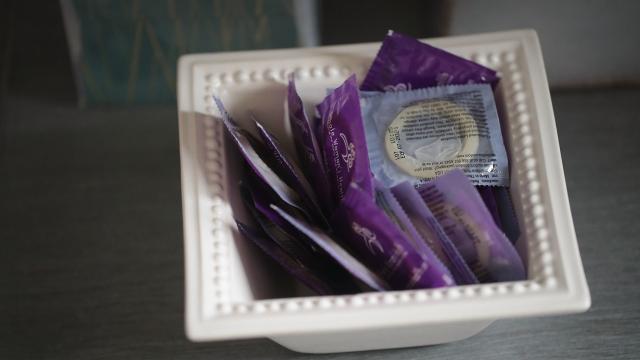Sexually transmitted infections continue to be a major headache for Americans and their wallets, according to a new report released Tuesday by the Centres for Disease Control and Prevention. About one in five Americans in the U.S. were thought to carry an STI in 2018, while there were 26 million new cases estimated that same year. These new cases also racked up billions in direct medical costs.
In recent years, there has been a steady annual increase of reported STIs in the U.S. In 2018, there were nearly 2.5 million confirmed cases of chlamydia, gonorrhea, and syphilis — the highest combined number of all three ever reported in a year. Most STIs tend to go unreported, though, often because they don’t cause any visible symptoms at first or because people are reluctant or unable to get testing.
This new CDC report tried to account for these hidden cases, while also calculating the financial toll caused by STIs in 2018. It looked at eight common STIs: chlamydia, gonorrhea, syphilis, hepatitis B, herpes simplex virus type 2 (the most common cause of genital herpes), human papillomavirus (HPV), and trichomoniasis.
Nearly 68 million Americans — about one in five — were estimated to have a chronic or acute STI in 2018, with 98% of these infections caused by chlamydia, trichomoniasis, genital herpes, or HPV. Chlamydia, trichomoniasis, genital herpes, and HPV also accounted for about 93% of the 26 million STI cases estimated to have occurred in 2018. Altogether, these new infections led to direct lifetime medical costs of about $US16 ($21) billion, though that’s likely an underestimate of their true price tag.
“The total cost of STIs far exceeds the medical cost burden estimated in this study, which did not include costs associated with lost productivity, other non-medical costs, and STI prevention,” the report authors wrote.
STIs caused by bacteria or parasites remain easily treatable once diagnosed, though cases of antibiotic-resistant gonorrhea are now becoming a real concern. The viral hepatitis B and HPV are nearly entirely preventable with an effective childhood vaccine. And the risk of catching STIs can be significantly reduced through condom use and other safe-sex practices, including pre-exposure prophylaxis (PrEP) for HIV. In other words, the tools for reducing the burden of STIs are there.
[referenced id=”1660763″ url=”https://gizmodo.com.au/2020/12/yes-super-gonorrhea-is-real-and-its-gonna-get-worse/” thumb=”https://gizmodo.com.au/wp-content/uploads/2020/12/29/hw6qslvlsz2cuewjjkqm-300×169.png” title=”Yes, Super Gonorrhea Is Real and It’s Gonna Get Worse” excerpt=”Over the weekend, a particularly awful pair of words started trending on social media: super gonorrhea. That’s because the World Health Organisation recently warned that the pandemic is helping fuel the rise of antibiotic-resistant bacteria, including the bacteria that cause gonorrhea. Unfortunately, the situation is only likely to get worse.”]
There are many reasons why STIs are climbing in recent years, and it probably doesn’t have anything to do with younger people having more sex (the opposite may be true, actually). The renewal of abstinence-only sex ed programs during the Trump administration and reduced access to good sexual healthcare and testing are likely more concrete factors.
Because this report only covers up to 2018, it’s an open question whether the pandemic has reduced the incidence of STIs since 2020, as it has for other infections like the flu. It’s possible that rates of STIs could jump once people can socialise freely again. But in any case, practicing safe sex and getting routinely tested if you’re sexually active, especially with multiple partners, will remain the best ways to avoid STIs for the foreseeable future.
